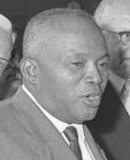This article needs additional citations for verification .(August 2024) |
This is a list of flags currently or historically used in Madagascar.
This article needs additional citations for verification .(August 2024) |
This is a list of flags currently or historically used in Madagascar.

The History of Madagascar started from the ancient supercontinent of Pangaea, containing amongst others the African continent and the Indian subcontinent, and by the island's late colonization by human settlers from the Sunda Islands and from East Africa. These two factors facilitated the evolution and survival of thousands of endemic plant and animal species, some of which have gone extinct or are currently threatened with extinction. Trade in the Indian Ocean at the time of first colonization of Madagascar was dominated by Indonesian ships, probably of Borobudur ship and K'un-lun po types.

Politics of Madagascar takes place in a framework of a semi-presidential representative democratic republic, with a pluralist multi-party system. The President of Madagascar is head of state and the Prime Minister of Madagascar is head of government. Executive power is exercised by the government. Legislative power is vested in both the government and the bicameral parliament, which is composed of the Senate and the National Assembly. The Judiciary is independent of the executive and the legislature.

The economy of Madagascar is US$9.769 billion by gross domestic product as of 2020, being a market economy and is supported by an agricultural industry and emerging tourism, textile and mining industries. Malagasy agriculture produces tropical staple crops such as rice and cassava, as well as cash crops such as vanilla and coffee.

The Madagascar Armed Forces is the national military of Madagascar. The IISS detailed the armed forces in 2012 as including an Army of 12,500+, a Navy of 500, and a 500-strong Air Force.
Colonel Richard Ratsimandrava was a Malagasy politician and soldier who served as the head of state of Madagascar for six days in February 1975 before his assassination in office.

Albert Zafy was a Malagasy politician and educator who served as the fourth President of Madagascar from 1993 to 1996. In 1988, he founded the National Union for Democracy and Development (UNDD).

Didier Ignace Ratsiraka was a Malagasy politician and naval officer who was the third President of Madagascar from 1975 to 1993 and the fifth from 1997 to 2002. At the time of his death, he was the longest-serving President of Madagascar.

Gabriel Ramanantsoa was a Malagasy politician who served as the second President and eighth Prime Minister of Madagascar from 1972 to 1975.

René Tantely Gabrio Andrianarivo was a Malagasy politician who was Prime Minister of Madagascar from 23 July 1998 to 31 May 2002, under President Didier Ratsiraka.
Articles related to Madagascar include:
Richard Mahitsison Andriamanjato was a Malagasy politician.
Manandafy Rakotonirina was a Malagasy politician. He had been a significant political figure in Madagascar since the 1970s, and in April 2009 he was appointed as prime minister by ousted president Marc Ravalomanana.

The Malagasy Republic was a state situated in Southeast Africa on the island of Madagascar. It was established in 1958 as an autonomous republic within the newly created French Community, became fully independent in 1960, and existed until the proclamation of the Democratic Republic of Madagascar in 1975.

Monja Jaona was a Malagasy politician and early nationalist who significantly drove political events on the island during his lifetime. He was a member of Jiny, a militant nationalist group formed in southern Madagascar in the 1940s that sided with MDRM during the ultimately unsuccessful Malagasy Uprising of 1947 against French rule. The colonial government imprisoned him from 1946 to 1950 for his affiliation with Jiny. He formed the Madagascar for the Malagasy (MONIMA) party in 1958 and successfully campaigned for the seat of mayor in Toliara, a position he held from 1959 to 1961. He came to view president Philibert Tsiranana and his Social Democratic Party (PSD) supporters as unduly favorable to continued French interests on the island after independence in 1960. Jaona instigated the 1971–72 rotaka farmer and student protests that successfully forced Tsiranana's resignation.

Madagascar – United States relations are bilateral relations between Madagascar and the United States.

Philibert Tsiranana was a Malagasy politician and leader who served as the seventh Prime Minister of Madagascar from 1958 to 1959, and then later the first President of Madagascar from 1959 to 1972.

The rotaka was a series of farmer and student protests in Madagascar between April 1971 and May 1972 that led to the collapse of the First Republic of Madagascar under President Philibert Tsiranana.

The Parti des déshérités de Madagascar was a political party active in Madagascar from June 1946 until the independence of the First Republic (1960–1972). It was formed in reaction to the establishment and rapid political success of the Mouvement démocratique de la rénovation malgache (MDRM) political party, formed by Merina elites on a platform of independence from France. While nationalist parties, including the MDRM, enjoyed broad support across various ethnic communities, PADESM focused on empowering and ensuring fair governance for coastal people. These coastal communities had a history of subjugation by the Merina group and were concerned that the MDRM might restore Merina political dominance after independence.
The 1990–1992 movement in Madagascar was a period of widespread popular unrest in Madagascar between March 1990 and August 1992. It began as a wave of strike action against the autocratic regime of President Didier Ratsiraka and culminated in the promulgation of a new constitution and a period of democratic transition leading to Ratsiraka handing the Presidency to opposition leader Albert Zafy in March 1993.
Alfred Ramangasoavina is a Malagasy politician during the era on Malagasy Republic, and former vice president of Madagascar.